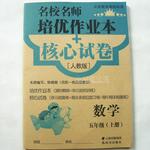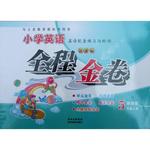题目内容
After John’s first wife died, he gets married again. His second wife was more younger than he was and they often quarreled. John once came home lately after work, his wife said to him that he had waited for two hours. She was too angry that she gave him a push, which made him fall down the stairs so he is old and weak. When Steven, one of John’s neighbor, heard the noise, he was eager to know which was happening. He came John’s front door and knocked. “What’s happened?” he asked. “My coat fell down the stairs,” John answered. When the neighbor said a coat wouldn’t make so many noise, John answered, “Of course it would if I was inside it!”
【小题1】 gets-----got
【小题2】more删除或者改为much
【小题3】 lately-----late
【小题4】 he----she
【小题5】too-----so
【小题6】so-----as或者because
【小题7】neighbor-----neighbors
【小题8】 which----what
【小题9】came后加to
【小题10】many-----much
解析试题分析:
【小题1】gets-----got 本文的基本时态是一般过去时,故使用过去式got。
【小题2】 more删除或者改为much 后面已经有了比较级形式younger,故使用much修饰比较级形式,或者单独使用。
【小题3】 lately-----late 副词lately近来,这个时间状语与现在完成时连用。本句是指下班回家晚了,使用late。
【小题4】he----she 本句是指他的妻子告诉他,她已经等了2个小时了。故使用she。
【小题5】too-----so 考察固定句式so…that…如此…以至于….;too是不和that连用。
【小题6】 so-----as或者because 上下文之间存在着因果关系,因为他年纪大了身体也不好,所以他从梯子上摔下来。
【小题7】 neighbor-----neighbors 前面的One of后面接复数形式,故使用-neighbors。
【小题8】which----what 本句中是一个宾语从句,what在句中作主语,which是指特定范围之内的某一个。本题是没有范围限制的,故使用what。
【小题9】came后加to 固定搭配come to….;指他来到John的前面。
【小题10】many-----much 后面的名词是noise是不可数名词,前面使用much修饰。
考点:考查学生在上下文语境中对词汇语法的掌握情况

 名校名师培优作业本加核心试卷系列答案
名校名师培优作业本加核心试卷系列答案 全程金卷系列答案
全程金卷系列答案